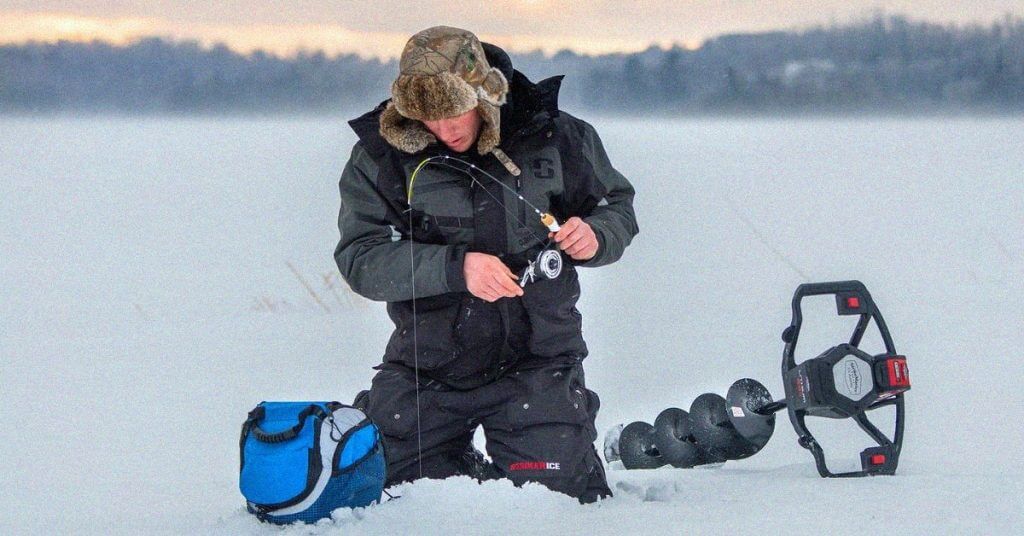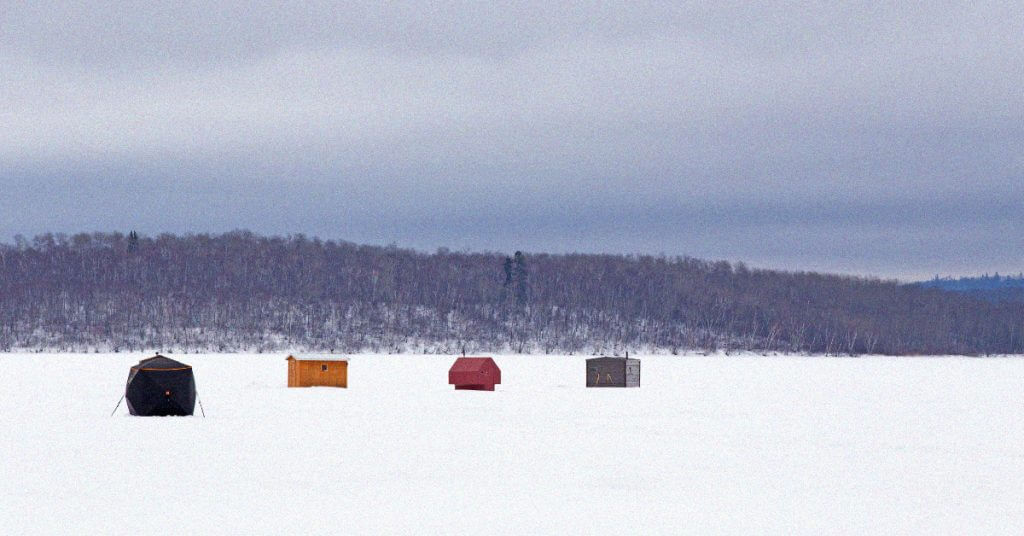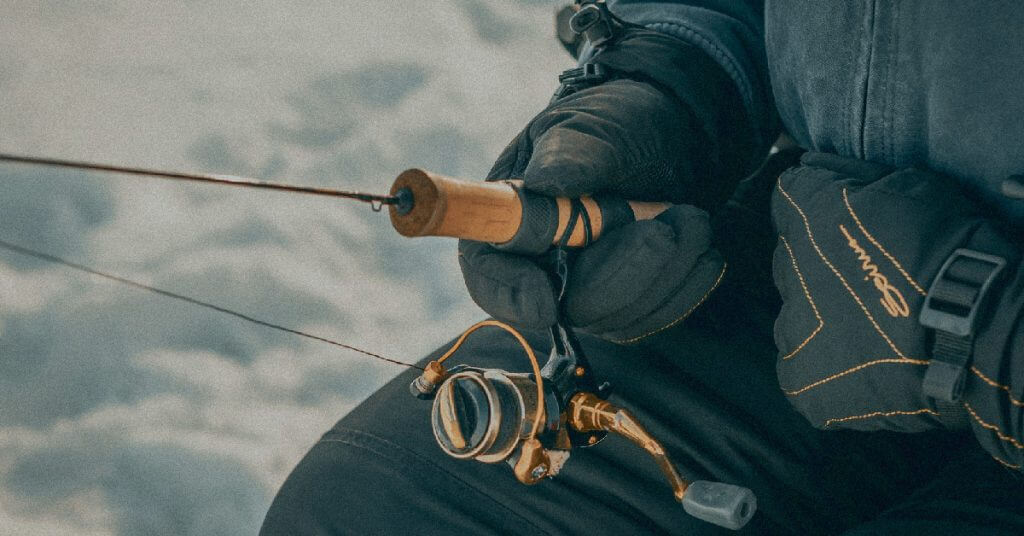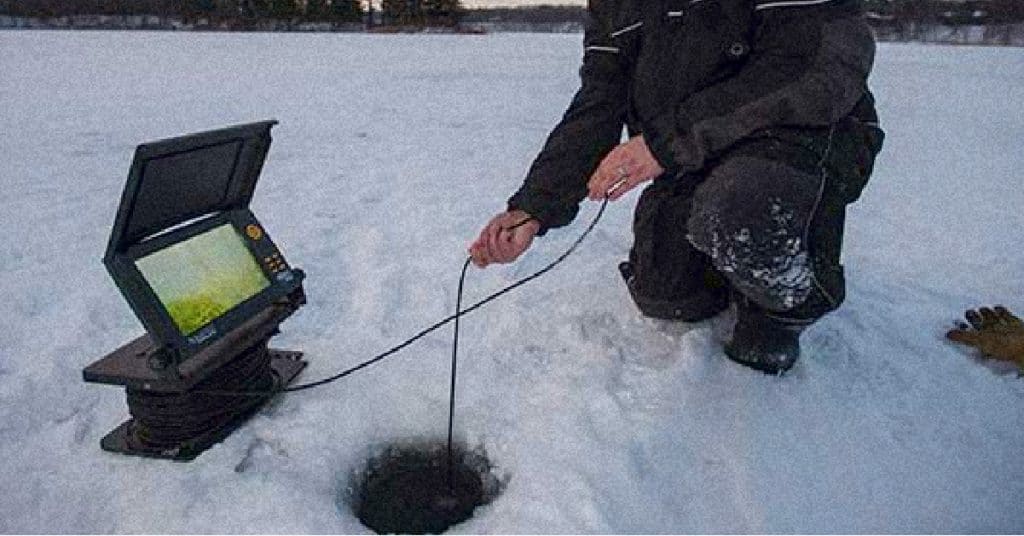Ice fishing for pike is one of the best experiences an angler can have, no matter their skill level.
While it requires more patience than other types of fishing, it’s a rewarding and unique experience.
But how does one go about ice fishing for pike?
If you’ve been curious about how to ice fish, we’re here to help. Read on for a quick guide on where, when, and how to ice fish for pike.
Make sure to stick around afterward for a brief FAQ section!
Where to Ice Fish for Pike
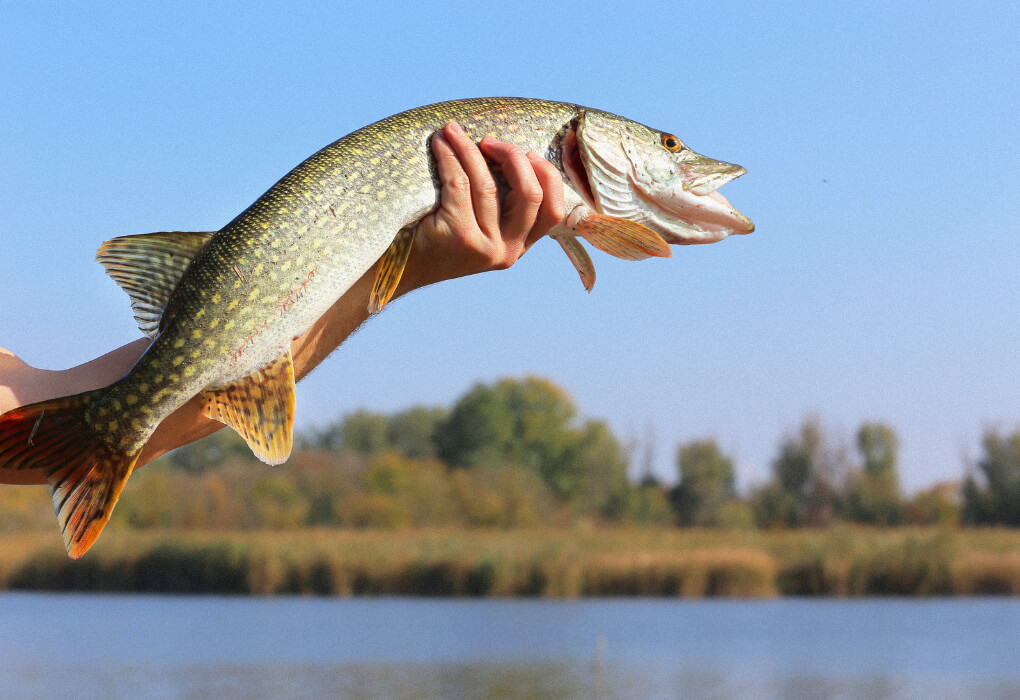
Ice fishing for pike can be done in many places. They favor freshwater, making lakes and rivers the premier spot to ice fish for pike.
Alaska is one of the best places to find northern pike. Specifically, the Yukon River is a stellar spot to find fish. The tributaries of the Yukon are good options as well, though your luck may vary.
The fish are best in cool, slow-moving waters.
Outside of Alaska, around the Great Lakes is another excellent spot to ice fish for pike. A contour map can help you spot their favorite ambush areas – weed lines, points, narrows, deadfalls, and other places they can hide.
Most fishing for northern pike is done in water about a dozen feet deep. Suspending your bait a few feet below the ice will help you spot some of the hungriest pike.
Still, moving your bait’s depth around will likely give you the best chances.
A great tip is to use an ice-fishing fish finder. These gadgets help you locate where the fish are so you don’t spend hours of your day hoping the fish are there.
Bringing the right gear is crucial to fishing, so don’t hit the ice without one!
When to Ice Fish for Pike
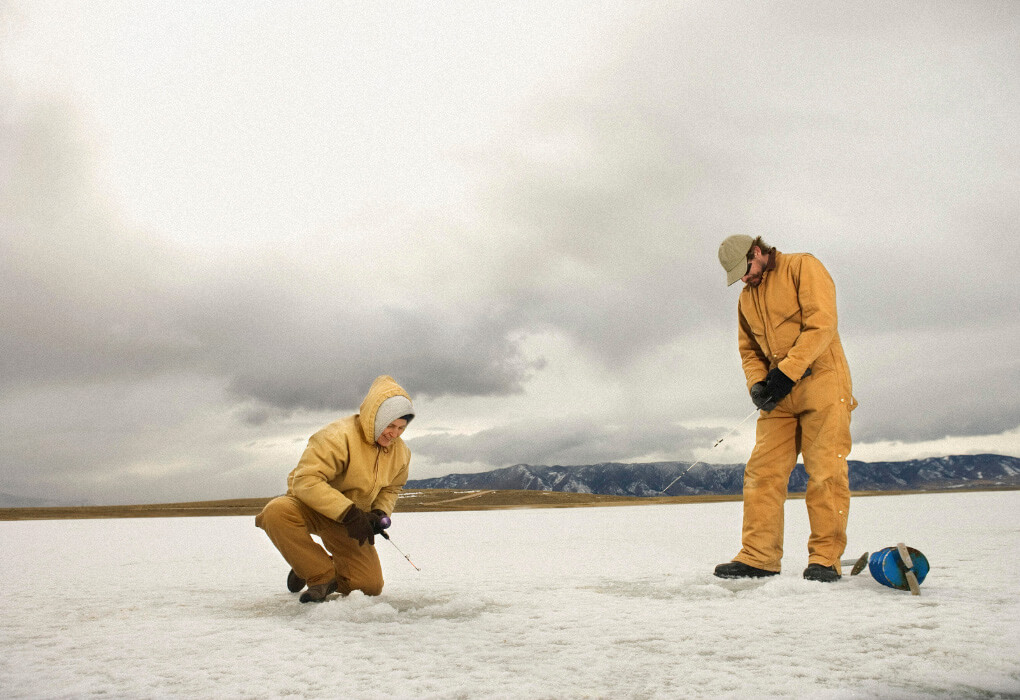
Ice fishing for pike is most commonly done in the winter months, as this is when you can count on lakes and rivers being frozen over.
Fish aren’t always more active, but the food is scarce, making them more likely to bite.
Look into what the fishing season is in your area so you don’t fish illegally! Limits and dates can vary, and some locations have size restrictions.
Read up on local regulations to ensure you won’t get a ticket.
Others may also have issues with territorial borders. Using Minnesota as an example, border waters with Canada, the Dakotas, Iowa, and Wisconsin can all have different limits.
You also may need different fishing licenses, particularly across national borders.
In terms of what time of day, you have a decent window.
Pike are most likely to be active late morning and early afternoon. Arriving just before sunrise will let you fish up to about 1 P.M. You also may have good luck during late evenings.
Ice Fishing Rigs for Pike
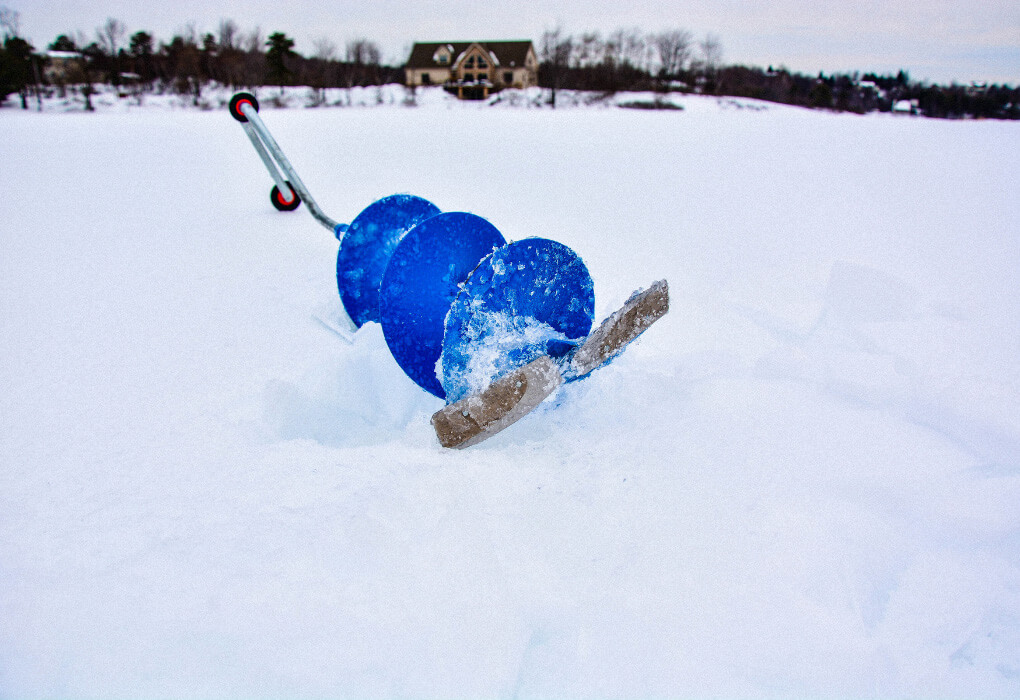
There’s a great deal of gear that you should bring for ice fishing! We’ll get into lures later on in the article. For now, let’s focus on the rest of your loadout.
Starting with your essential gear, bring the ice auger. An auger will help you with drilling a hole into the ice. This is quicker, requires less effort than other means, and is safer.
Ice picks can sometimes cause the ice to crack, which can send you into the frigid water.
You should also bring a scoop for removing slush and ice from the hole. Doing so can keep it clear, make it easier to fish, and stop the hole from freezing back over.
Ensure you bring something to sit on, as sitting on the ice will sap moisture from your body.
A chair is good, but you should consider a pop-up fishing shelter. These shelters can insulate you, make your fishing more comfortable, and keep you safer.
Finally, you’ll need your rig itself.
Look into the best ice fishing reel and other such accessories to help make your ice rod as effective as possible.
Ice fishing needs a different rod and reel combo and lures than traditional fishing styles.
You can still use a common fishing line such as monofilament and fluorocarbon, but braided line is not recommended, as it will fray faster due to the sharp ice.
If you’re going to use mono, I highly recommend using a fluorocarbon leader to help the lures maintain a natural action.
Optional Gear

There are plenty more gadgets and quality-of-life things you may want to bring. While all you truly need is a fishing pole and your favorite bait, this can end up with a miserable fishing experience.
For example, bringing a sled can help make hauling your gear easier. If you intend to go far out on the ice (which isn’t suggested for northern pike), you’ll be much happier if you bring a sled.
A small tackle box can help you keep the best selection of lures and tackle.
For your personal use, we suggest your warmest clothes and ice-safe boots.
A face mask to block the wind is a great choice, as well as disposable hand and toe warmers. A headlamp, waterproof gloves, and a change of clothes are also good options to have on hand.
For safety, consider sunscreen. Many feel that the chill and clouds stop sunburns, but the UV light responsible for sunburns still comes through the clouds.
That said, your warm clothes should cover most of your skin, so you may only need sunscreen on your face.
Gear-wise, we also suggest a compass if you get lost on the ice. Rulers and scales are also good if you’re somewhere with heavy regulations on the fish.
Finally, a small propane heater can help to fend off the chill, especially with a pop-up shelter.
Best Ice Fishing Lures for Pike

Northern Pike are susceptible to plenty of lures. This helps you pick what works best for you instead of being forced into a specific type of bait!
If you like live baitfish, look into golden shiners. White suckers are also suitable for bait, as are sea smelts.
All three are excellent options depending on your location and what’s available to you.
If you prefer lures over live bait, curly and paddle tails are the way to go. These are most effective in winter.
Many believe this is because pike target larger baits in winter due to the scarcity of food and wanting the most food for the least effort! You can use this to decide on any bait or baitfish.
You should also look into jigs, spoons, and spinners. Blade baits are also excellent choices. Finally, most soft plastic baits are good choices.
In short, northern pike will bite a wide variety of lures. Look into what’s available and best for your loadout and budget.
Once you have your preferred loadout, don’t be afraid to diversify into other options.
Presenting Lures to Pike
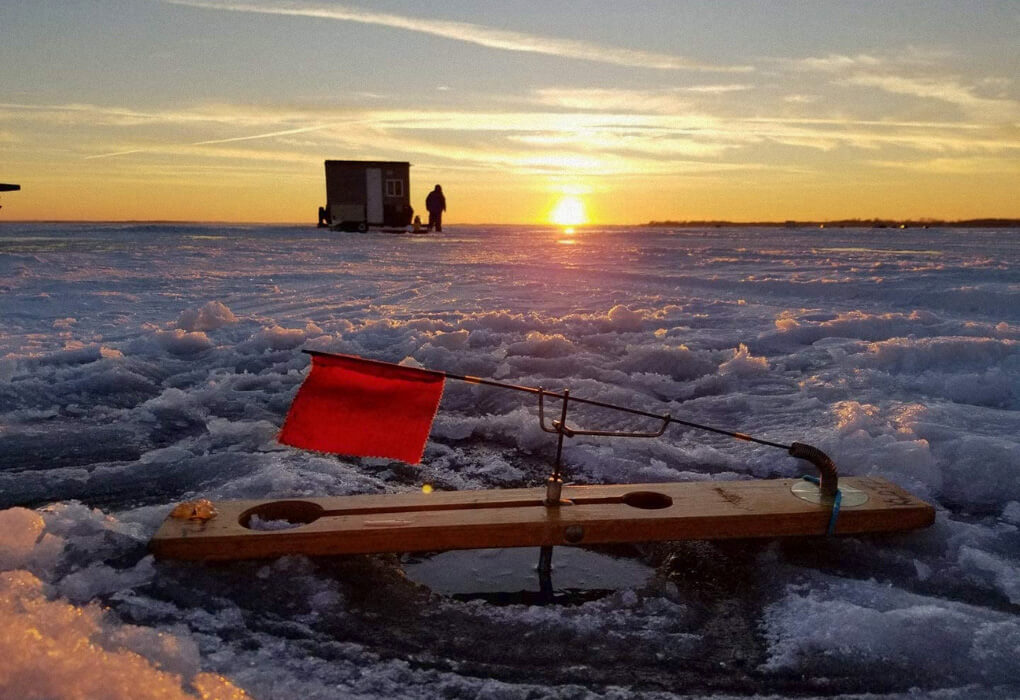
Now that you have your lures, how should you present them to a northern pike? There are multiple steps to getting the best out of your lure.
The first thing you should decide on is depth. These fish tend to go anywhere from 6 to 15 feet deep. Drop your lure a few feet below the ice and let it rest to see if any pike come after it.
Should your lure stay still for too long, drop it a few more feet.
The same is true for the bottom of the ice. Pike won’t venture into the deepest water, as they prefer the cover of weeds, creek channels, and laydowns to ambush their prey.
Let the lure rest a few feet off the bottom of the water, and lift and twitch it if it remains still for too long.
Your best option is a tip-up rig. These tip-up rigs for pike don’t use any rod or traditional reel, instead opting for a reel placed in your fishing hole.
When a fish unspools the line, this triggers a signal flag to raise (hence, tip-up).
Think of this raising like the bending of your line, but be careful, as many things can cause a tip-up to rise.
Once your line is lowered, ice fishing is a game of patience and waiting. Try to stay warm and keep your mind on your fish while you wait to see the flag raised.
As an important safety note, don’t become too excited if you see your flag raised. Many fishermen take this as a rushed signal and run toward their flags.
On the ice, this can lead to slipping, injury, or going into the water.
5 Tips for Catching Big Pike When Ice Fishing
Now that we’ve covered some of the many things you should bring, what are some good tips?
There’s plenty that goes into catching the biggest pike. Here are five quick tips on what you should look for when trying to ice fish for pike.
1. Big Bait
As we discussed previously, pike tend to go for the biggest catch. Large pike will often seek out large baits, as it’s a bigger meal for less effort.
Because of this, you won’t want to use small bait. A sizeable minnow is a great choice, but pike anglers can benefit from many different small fish.
If you prefer dead bait, small crappie and bluegill are other excellent choices if it’s legal in your area.
2. Stick to Vegetation
Pike are ambush predators, meaning you’ll find most of them where they can ambush. Pike tend to stay near vegetation, mainly weed edges and beds.
Keep your lure near these areas to have the best chance of catching a large pike. You may find some in open water, but your chances are much lower.
3. Stay Shallow and Quiet
Due to their ambushing nature, you won’t want to look for northern pike in the deepest waters. Keep your line in the shallower areas. Creek narrows and the turns of tributaries are great locations.
You should also avoid spooking the other fish in the area. If you can use a hand-powered drill, this can help keep your noise down.
With other fish in the area, pike will be more attracted to the area.
4. No Sense of Smell
Many anglers will toss chunks of bait into the water to attract fish by smell. If you’re searching for northern pike, don’t bother – they can’t smell!
However, they have excellent vision. Consider using lures that catch their eyes, but you can give up on any smell-related bait before you hit the ice.
5. Stay Slow
We mentioned earlier to avoid running to your raised tip-up for safety reasons. However, there are angling reasons to avoid running for it as well!
One thing that northern pike anglers have to get used to is the slowness of the fish. Many fish are quick-striking hunters, snatching bait as they pass. Northern pike take their meals much more slowly.
Instead, they’ll take a minnow sideways in their mouth and swim with it for a moment. Once they’ve decided on their snack, they’ll eat the minnow. This can make picking when to set your hook more difficult.
Get used to feeling your line to see what’s happening. Don’t rush yourself – the fish certainly won’t rush!
Some Final Ice Fishing Tips
Now that we’ve discussed a little about ice fishing for Pike, there are still a few things to cover.
Here are the three things new ice anglers wonder about most often.
How deep should you fish for northern pike?
Shallow water tends to be best for northern pike. That isn’t to say that you can’t catch any outside of the shallows, but it’s where your focus should be.
Midwinter sees most of them sticking toward the shores as the temperatures drop. This is because they’re chasing warmer temperatures in the water column before things begin to plummet fully. Shallow water is warmer, making them more plentiful in these areas.
Depending on where you’re fishing, many may swim around the drop-off and humps. These areas are warmer while giving an excellent place for them to hide.
Northern pike may hide in the drop-off and snatch prey as it swims by. Most days, you can catch northern pike in deep water by sticking near these drop-offs.
In short, sticking to the shallows and weed beds is the best way to catch northern pike. If your luck is poor, don’t hesitate to try deeper water, especially if you can beat the early ice.
What is the best bait for northern pike ice fishing lures?
Big lures are the best bait for northern pike. Your fishing tackle should include lures that trick northern ike into thinking they’re going after a bigger fish.
Big fish want big bait! If you’re bringing live bait, bring minnows, panfish like small crappie, and the like. If you prefer lures, bring spoons, spinners, and blade baits.
These are all excellent choices for catching your northern pike. Don’t be afraid to try out multiple ice fishing lures!
What is the best time of day to fish for pike?
Pike fishing is best in the early morning to late afternoon. This is when these fish are most active and are most likely to take your bait.
However, this is far from the only time you should fish. Going past the late afternoon into early evening is fine. Your times may change depending on your location, season, and other factors.
As a note, many pike fishing professionals find that pike are less active after the sun goes down.
Ice fishing at night is particularly brutal as it is, so you should avoid the moonlight. Stick to the relative warmth of the daytime to maximize your luck!
Casting Out
Ice fishing for pike is one of the most rewarding experiences that an angler can have. Do your best to research your area so you know what northern pike responds to best in your area.
Speaking to other anglers is a great way to learn! Bring the best gear and prepare to go home with plenty of fish!
For more information on how to get the most out of your fishing experience, browse our ice fishing section!


